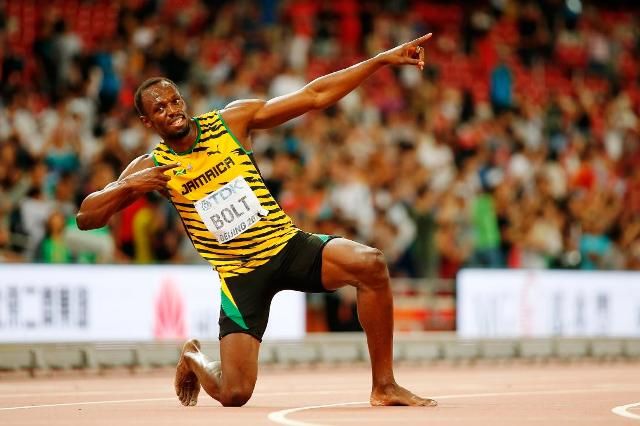Top Athlete Battles Trigger Finger: Impact On Performance

Top Athlete Battles Trigger Finger: Impact On Performance. Discover more detailed and exciting information on our website. Click the link below to start your adventure: Visit Best Website. Don't miss out!
Table of Contents
Top Athlete Battles Trigger Finger: Impact on Performance and Road to Recovery
Professional athletes dedicate their lives to peak physical condition. Even minor injuries can derail careers, and a surprisingly common ailment—trigger finger—is proving to be no exception. This article explores the impact of trigger finger on athletic performance and highlights the challenges and recovery strategies faced by elite competitors.
Keywords: trigger finger, athlete, sports injury, hand injury, tendonitis, performance, recovery, surgery, treatment, rehabilitation, physical therapy
<h3>What is Trigger Finger?</h3>
Trigger finger, also known as stenosing tenosynovitis, is a condition affecting the tendons in the hand. It causes a finger to lock or catch in a bent position, often accompanied by a painful snapping sensation when straightening. This debilitating condition stems from inflammation of the tendon sheath, hindering smooth tendon gliding. While it can affect anyone, repetitive movements and strenuous hand use, common in many sports, increase the risk for athletes.
<h3>Impact on Athletic Performance: A Case Study</h3>
Recently, [Insert Name of Athlete and Sport, if available. If not, use a hypothetical example], a top-ranked [Athlete's Sport] player, was sidelined due to a severe case of trigger finger in their dominant hand. This highlighted the significant impact this often-underestimated condition can have. For [Athlete's Sport], requiring precise hand-eye coordination and powerful grip strength, even a slight impairment severely impacts performance. The athlete experienced:
- Reduced Grip Strength: Inability to maintain a firm grip on equipment significantly hampered performance.
- Limited Range of Motion: The locking and catching of the finger restricted movement, making it difficult to perform key techniques.
- Pain and Discomfort: The constant pain impacted focus and concentration, further hindering performance.
- Missed Games and Training: Recovery from trigger finger can take considerable time, causing athletes to miss crucial games and vital training sessions.
<h3>Diagnosis and Treatment Options</h3>
Diagnosing trigger finger typically involves a physical examination by a physician or specialist. Imaging techniques like ultrasound may be used to confirm the diagnosis and rule out other conditions. Treatment options vary depending on the severity:
- Conservative Treatments: These include rest, splinting, medication (e.g., NSAIDs to reduce inflammation), and corticosteroid injections. Physical therapy plays a crucial role in strengthening the hand and improving flexibility.
- Surgical Intervention: In severe cases where conservative treatment fails, surgery might be necessary to release the constricted tendon sheath. This procedure often involves a small incision and is typically performed on an outpatient basis.
<h3>Recovery and Return to Competition</h3>
The recovery process after trigger finger treatment, whether conservative or surgical, requires patience and dedication. A structured rehabilitation program is essential, typically involving:
- Gradual Strengthening Exercises: Carefully designed exercises to rebuild strength and mobility in the affected hand.
- Range of Motion Activities: Exercises to regain full flexibility and prevent stiffness.
- Occupational Therapy: Guidance on modifying activities to minimize strain on the hand and prevent recurrence.
The timeline for a full recovery varies depending on the individual, the severity of the condition, and the chosen treatment. Athletes may need several weeks or even months to regain full functionality and return to competition.
<h3>Prevention and Long-Term Management</h3>
While not always preventable, athletes can take steps to minimize their risk of developing trigger finger:
- Proper Warm-up: Thorough warm-up exercises before activities that involve repetitive hand movements.
- Ergonomic Considerations: Using proper techniques and equipment to avoid excessive strain on the hands.
- Regular Rest and Recovery: Allowing adequate rest between training sessions to prevent overuse injuries.
- Addressing Underlying Conditions: Promptly treating any underlying medical conditions that could contribute to trigger finger development.
Conclusion: Trigger finger is a significant concern for athletes across various disciplines. Early diagnosis, appropriate treatment, and a dedicated rehabilitation program are crucial for successful recovery and a timely return to peak performance. If you suspect you might have trigger finger, consult a medical professional immediately. Early intervention can often prevent long-term complications.

Thank you for visiting our website wich cover about Top Athlete Battles Trigger Finger: Impact On Performance. We hope the information provided has been useful to you. Feel free to contact us if you have any questions or need further assistance. See you next time and dont miss to bookmark.
Featured Posts
-
 Rare Menendez Crime Scene Photos Emerge Sparking Renewed Interest
Feb 05, 2025
Rare Menendez Crime Scene Photos Emerge Sparking Renewed Interest
Feb 05, 2025 -
 Effective Flea Dirt Removal Cleaning Your Home And Pet
Feb 05, 2025
Effective Flea Dirt Removal Cleaning Your Home And Pet
Feb 05, 2025 -
 Find 54 Of 80 Quick Method And Practical Applications
Feb 05, 2025
Find 54 Of 80 Quick Method And Practical Applications
Feb 05, 2025 -
 Chelseas Lineup Vs West Ham Key Battles And Predicted Formation
Feb 05, 2025
Chelseas Lineup Vs West Ham Key Battles And Predicted Formation
Feb 05, 2025 -
 Beatrice Priors Journey From Abnegation To Dauntless And Beyond
Feb 05, 2025
Beatrice Priors Journey From Abnegation To Dauntless And Beyond
Feb 05, 2025
